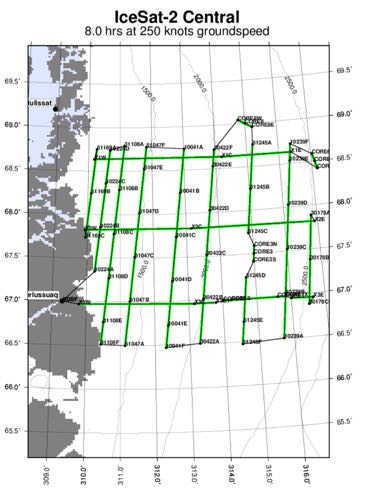 This is located at the airport in Kangerlussuaq and it tells the distance and direction to different cities in the world.
This is located at the airport in Kangerlussuaq and it tells the distance and direction to different cities in the world.
Last Flight
Today I took my last flight on the P-3 Orion. I'm sad to be leaving. The group made me feel like I was part of the team and everyday I learned something new. It's funny when I leave a place. I know that the people I'm leaving will go on without me being there and I will also continue on but a part of me hopes that I left a piece of myself behind. That the crew will remember me even if I'm not there. Inherently I know that I will be remembered because they talk fondly of the PolarTREC teachers who have come before me and I will be in an anecdote told to the next lucky teacher who gets to tag along in their adventures. This experience will be on the forefront of my mind for the next month as I'm back at school teaching and talking about my experiences. I can't thank PolarTREC and NASA enough for giving me the chance to be a polar scientist for a few weeks. One of the people I've met up here told me that I AM a NASA scientist. Last night he said "you were in a NASA plane, flying, so that makes you a NASA astronaut." I don't know if I quite qualify as an astronaut but I learned a lot about what NASA does. They are more than just outer space. They research the entire planet, and I am happy to be part of the IceBridge team. I have learned about climate change and I plan on continuing my education in polar science. Using what I have learned in my classroom and sharing my experiences with as many people as I can.
 Greenland Icecap taken as the P-3 Orion was leaving Kangerlussuaq.
Greenland Icecap taken as the P-3 Orion was leaving Kangerlussuaq.
Today's mission
ICESat was launched in 2003. It had one instrument called a Geoscience Laser Altimeter System (GLAS) which uses an infrared (red colored) laser and that was used to measure the topography of the land. It basically works like the Airborne Topographic Mapper (ATM) on the plane. The laser can tell scientists ice sheet thickness, cloud heights, land topography, and vegetation characteristics. ICESat was retired in 2010. ICESat-2 is scheduled to go into space in 2018. It is equipped with the Advanced Topographic Laser Altimeter System (ATLAS), which like ICESat will measure ice sheet elevation, sea ice, land topography and vegetation characteristics. Unlike ICESat, ICESat-2 has four green lasers, increasing the area over which it can record data. ICESat-2 has the advantage of covering a larger area than ICESat. The time in-between the two satellites is where Operation IceBridge comes in. It bridges the gap between the two satellites, allowing the scientists to still gather information while ICESat-2 is being designed. IceBridge is the largest aerial mission ever preformed by NASA. It does multiple campaigns, gathering data from both poles. After ICESat-2 is launched, IceBridge will do one more arctic campaign. There will be other aerial missions flown by NASA after ICESat-2 is launched. NASA has been flying aerial campaigns for years and will still do so to gather data scientists need to study the Earth. Today we flew a mission called ICESat-2 Central. According to Dr. Joe MacGregor, "This mission is designed to overfly planned ICESat-2 ground tracks over a wide range of ice regimes near Kangerlussuaq. We center some of the flightlines on each of three beam pairs (left, nadir and right) in turn, sampling three of each beam pair during this mission. The east-west crossing lines are designed to capture as many ascending/descending crossovers as possible. We modified and augmented the mission in 2016 to overfly five GreenTrACS core sites."
 Copy of the flight lines for the ICESat-2 Central mission.
Copy of the flight lines for the ICESat-2 Central mission.
 DMS image of FirnCover camp at CORE1 waypoint, showing tents, snowmobiles, sleds and science equipment (Eric Fraim / NASA).
DMS image of FirnCover camp at CORE1 waypoint, showing tents, snowmobiles, sleds and science equipment (Eric Fraim / NASA).
 This plane was on the tarmac at the Kangerlussuaq airport.
This plane was on the tarmac at the Kangerlussuaq airport.

Comments
Add new comment